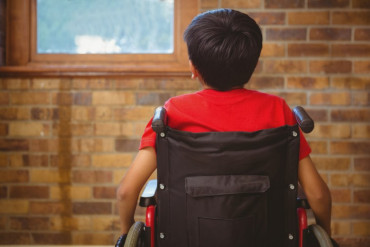Can Birth Trauma Cause Cerebral Palsy?

Cerebral palsy is a medical condition that encompasses a number of neurological disorders that stem from damage to the area of the brain that controls muscle coordination and body movement. The disorder affects individuals in varying degrees, from those who are hardly affected to those who suffer debilitating symptoms that require a lifetime of care. There is currently no cure for cerebral palsy, and in some cases, the cause can’t be determined. However, one cause of cerebral palsy that is known is traumatic birth injury – which is preventable in most cases.
What Are the Causes of Traumatic Birth Injuries?
It’s estimated that five to seven out of every 1,000 births involve some type of birth injury or trauma.
There are many different causes of traumatic birth injury, including:
- Pre-term labor – a birth is considered pre-term when it is before 37 weeks
- Abnormal presentations – including breech or face-first position
- Macrosomia – this refers to babies that are overly large, typically those exceeding 8 pounds, 13 ounces
- Use of delivery devices – when vacuum extractors or forceps are used to aid delivery
- Excessive traction – this includes twisting or pulling the baby during delivery
- Umbilical cord injuries – including prolapsed, twisted, or pinched umbilical cords
- Cephalopelvic disproportion – this is a condition in which the baby’s head is too large to pass through the birth canal
- Prolonged labor or labor that is too fast – this can occur naturally or with the use of labor inducing medications
Many of the above causes of traumatic birth injuries can lead to complications that may result in a newborn developing cerebral palsy.
How Does a Traumatic Birth Injury Lead to Cerebral Palsy?
Any traumatic birth injury that causes damage to the brain can result in a baby developing cerebral palsy, sometimes to a degree that means they will need a lifetime of medical and personal care. While there are some traumatic birth injuries that are unavoidable and cerebral palsy is the result, there are many situations in which the trauma could have been completely prevented. In those cases, it is often medical negligence or malpractice that cause the trauma that results in the child developing cerebral palsy.
The following are some of the ways that traumatic birth injuries can lead to cerebral palsy:
- Lack of oxygen – There are a number of situations that can result in too little or a total lack of oxygen reaching the baby’s brain. It can occur while the baby is still in utero, during delivery, or after birth. Some of the most common causes of oxygen not reaching the baby’s brain are: an early detachment of the placenta, the rupture of the uterus during childbirth, or umbilical cord complications.
- Intracranial hemorrhages – When a traumatic birth injury occurs to the baby’s head, intracranial hemorrhages (brain bleeding) can result. The bleeding can vary from minor cases to extremely severe cases, the latter of which can lead to permanent brain damage, cerebral palsy, or death. When doctors or other medical professionals fail to diagnose and prepare for certain conditions like cephalopelvic disproportion, macrosomia, abnormal presentation, prolonged labor, and umbilical cord complications, intracranial bleeding leading to cerebral palsy can occur.
- Misuse of Delivery Tools – During some difficult deliveries, obstetricians may turn to the use of delivery instruments to help them deliver the baby successfully. The most commonly used devices are forceps and vacuum extractors. These tools are used by being applied to the baby’s head during a traumatic birth. When the instruments are not used correctly, they can result in brain hemorrhages, tearing of blood vessels or brain tissue, restricted blood flow to the brain, compression of the brain, cerebral contusions, and skull fractures.
In any of the above situations, medical neglect or malpractice may be the cause of the traumatic birth injuries that lead to cerebral palsy. When that occurs, parents may be able to pursue legal action to hold the responsible parties accountable and to secure financial compensation to ease the monetary burdens of raising a child with cerebral palsy.
Pursuing a Medical Malpractice Claim for a Child with Cerebral Palsy
Even when a case of a child developing cerebral palsy seems obvious, proving that it occurred due to medical malpractice can be extremely complicated. These types of cases require legal and medical professionals to gather evidence and review medical records. Medical experts will have to determine whether the child developed cerebral palsy due to a medical mistake that could have been prevented.
When it’s determined that parents have a valid case of medical malpractice, they may be entitled to compensation for past, present, and future medical expenses for the care of their child with cerebral palsy. There may be other compensation that parents are entitled to depending on the specific situation.
If your child suffers from cerebral palsy and you believe that it’s due to a traumatic birth injury that could have been avoided, contact an experienced attorney at Ross Feller Casey for a free review of your case.
Ross Feller Casey is among the nation’s leading birth injury law firms, and has an unmatched record of multi-million results in cases involving traumatic births that have led to cerebral palsy.
Disclaimer: Ross Feller Casey, LLP provides legal advice only after an attorney-client relationship is formed. Our website is an introduction to the firm and does not create a relationship between our attorneys and clients. An attorney-client relationship is formed only after a written agreement is signed by the client and the firm. Because every case is unique, the description of awards and summary of cases successfully handled are not intended to imply or guarantee that same success in other cases. Ross Feller Casey, LLP represents catastrophically injured persons and their families in injury and wrongful death cases, providing legal representation in Pennsylvania and New Jersey.





